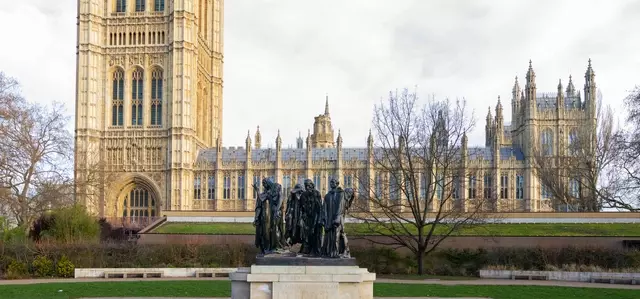
Welcome to Victoria Tower Gardens
Nestled between the sweeping River Thames and the spectacular Houses of Parliament, this park is a little pocket of peace at the heart of political power.
Key information
The history of Victoria Tower Gardens
A celebration of historic endeavour, freedom and equality.
Victoria Tower Gardens – Westminster’s secret green space
Tucked between the Houses of Parliament and the River Thames, Victoria Tower Gardens is a place that quietly celebrates some of history’s most famous campaigners for human rights, and personal freedoms.
A Victorian gift to the people of Westminster
The Grade II listed park, managed by The Royal Parks Charity, was created in two stages, and falls within a conservation area. The Government acquired the northern part of the gardens in 1867, to reduce the fire risk to the Palace of Westminster, but there was some disagreement about whether it should remain an open green space or be built on.
Eventually, the newspaper retailer William Henry Smith (founder of W.H. Smiths) stepped in, and donated £1,000 to preserve it as an open space – on the condition that it would be a place for recreation, particularly for the children of Westminster. The Government agreed – and match-funded his donation.
The second phase in the creation of Victoria Tower Gardens came just before the First World War, in 1913. The gardens were redesigned in a more natural landscape, with tranquil paths and a central shrubbery. This remained until 1956, when the shrubbery and trees standing in the lawns, were removed to give the small gardens a parkland atmosphere. This opened up the view, particularly of the Houses of Parliament.
The history of The Buxton memorial
The jewel-like Buxton Memorial commemorates the abolition of the slave trade in Britain and the British empire. It also honours Thomas Buxton, who played an important role in the campaign against slavery by founding the British and Foreign Anti-Slavery Society.
Samuel Sanders Teulon, a self-taught architect, designed this striking, gothic memorial – a perfect example of the Victorian passion for embellishment.
The history of ‘The Burghers of Calais’ by Rodin
Auguste Rodin’s bronze sculpture called The Burghers of Calais commemorates the courage of ordinary people facing exceptional danger.
Rodin made his original sculpture in 1889 and later made four casts, of which this is one. He even came to London in person to advise on where it should be placed.
Emmeline Pankhurst’s statue
Victoria Tower Gardens is also well-known as the site of Arthur George Walker’s Grade II listed bronze statue of Emmeline Pankhurst, the famous Suffragette and campaigner for women’s rights. Emmeline stands with her arms outstretched as though speaking at a rally.
If you’re interested in the history of Emmeline Pankhurst, you can visit her grave, at Brompton Cemetery.
The history of Horseferry Playground
Victoria Tower Gardens has always welcomed children – in fact the Government had to pledge to make the gardens a place for children to play, right from the start.
The Horseferry Playground in Victoria Tower Gardens features a sandpit, swings, and a water play installation designed to represent the River Thames. You can have fun – and get a bit of history– by seeing if you and your children can spot historic events embedded in the railings surrounding the playground. Look carefully and you should see The Great Fire of London, and Lord Nelson’s Funeral Barge.